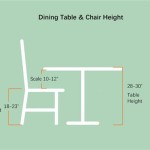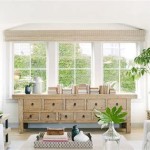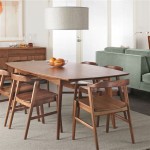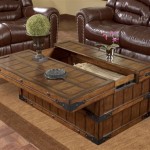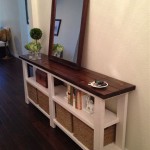Mid-Century Dining Tables for Six: A Guide to Style and Selection
The mid-century modern aesthetic, a design movement that swept across the globe from roughly the 1940s to the 1960s, continues to exert a significant influence on contemporary interior design. Characterized by clean lines, organic shapes, and a focus on functionality, mid-century modern furniture provides a timeless appeal that blends seamlessly with a variety of interior styles. Among the most important pieces in this design movement, the dining table holds a central position, serving as a gathering place for family and friends and a focal point for the dining room. This article will explore the key characteristics of mid-century dining tables designed for six people, offering insights into the materials, styles, and considerations involved in selecting the perfect piece for a modern home.
When considering a mid-century dining table suitable for seating six, the size and dimensions play a crucial role. A standard rectangular table designed for six typically measures between 60 and 72 inches in length and 36 to 42 inches in width. Round tables, another popular choice in the mid-century style, generally range from 48 to 54 inches in diameter to comfortably accommodate six individuals. These measurements provide sufficient space for place settings, serving dishes, and comfortable seating. However, the specific dimensions should also be considered in relation to the overall size of the dining room to ensure adequate circulation space around the table. A room that is too small can feel cramped with a large dining table, while a table that is too small in a large room may appear visually insignificant.
Key Materials Used in Mid-Century Dining Tables
The choice of materials is fundamental to the mid-century modern aesthetic. Certain materials, such as wood, metal, and laminate, were favored for their durability, versatility, and ability to express the clean, minimalist lines that define the style.
Wood is, perhaps, the most iconic material associated with mid-century furniture. Teak, walnut, and oak were frequently used for their rich tones, distinct grain patterns, and inherent strength. Teak, prized for its water resistance and durability, was especially popular in Scandinavian designs, offering warmth and elegance. Walnut, with its darker hue and striking grain, was often used in higher-end pieces, providing a more luxurious feel. Oak, known for its durability and versatility, was a more affordable option that still maintained the characteristic mid-century charm. Wooden table tops were typically finished with a clear lacquer to protect the surface and enhance the natural beauty of the wood grain.
Metal, often used in the table legs and support structures, provided a contrasting element to the warmth of the wood. Chrome and steel were commonly employed, lending a sleek, modern touch to the design. Metal legs were often tapered or splayed, a signature characteristic of the mid-century style. Black powder-coated metal was also a popular choice, offering a more understated, industrial-inspired aesthetic. In some cases, metal was also incorporated into the tabletop design as decorative accents or edge banding.
Laminate, a synthetic material made from layers of paper or fabric bonded together with resin, offered a durable and affordable alternative to solid wood. Laminate tabletops were often available in a variety of colors and patterns, allowing for greater design flexibility. While often associated with more budget-friendly options, high-quality laminate tabletops could still mimic the look of wood while providing superior resistance to scratches and stains. Formica, a popular brand of laminate, was widely used during the mid-century era and remains a viable option for those seeking a durable and easy-to-maintain dining table.
Identifying Characteristics of Mid-Century Dining Table Designs
Beyond the materials used, there are distinct design characteristics that define the mid-century dining table. These characteristics reflect the era's emphasis on functionality, simplicity, and visual appeal.
Clean lines are a defining feature of mid-century modern furniture in general, and dining tables are no exception. Straight edges, simple silhouettes, and a lack of excessive ornamentation are hallmarks of the style. Table tops are typically rectangular or round, with minimal detailing. Any curves or embellishments are usually subtle and serve to enhance the overall design rather than detract from it. The focus is on creating a visually uncluttered and aesthetically pleasing piece that complements the surrounding space. The legs often contribute significantly to the clean lines, being either straight and tapered or subtly angled.
Tapered legs are perhaps one of the most recognizable features of mid-century furniture. Rather than being straight and uniform in thickness, tapered legs gradually narrow towards the bottom, creating a sense of lightness and elegance. This design element is commonly found in both wooden and metal legs. The angle of the legs can also vary, with some being straight and others being splayed outwards at a slight angle. Splayed legs not only add visual interest but also provide greater stability to the table. The legs are frequently attached to the table top with visible brackets or hardware, adding to the overall industrial-chic aesthetic.
A minimalist aesthetic is central to mid-century modern design. Unnecessary details and ornamentation are avoided in favor of clean lines, simple shapes, and a focus on functionality. The goal is to create a piece that is both visually appealing and practical. This minimalist approach extends to the choice of hardware and finishes, with subtle and understated details being preferred. The overall effect is one of understated elegance and timeless appeal. Excess decorations would be contrary to the function-first design ethos that defines the style. The beauty resides in its simple form and functionality.
Factors to Consider When Choosing a Mid-Century Dining Table
Selecting the right mid-century dining table requires careful consideration of various factors, including the size of the room, the existing décor, and the intended use of the table. By taking these factors into account, individuals can choose a piece that not only complements their existing space but also meets their functional needs.
The available space in the dining room is one of the most important considerations. Measure the dimensions of the room and ensure that there is enough space around the table for comfortable seating and circulation. As stated before, a general rule of thumb is to allow at least 36 inches of space between the table and the walls or other furniture. Also consider the placement of chairs around the table, ensuring that they can be easily pulled out and that there is enough room for people to move around the table without bumping into each other. If the dining room is small, a round table may be a better option than a rectangular table, as it can create a more intimate and space-efficient seating arrangement. Expandable tables also exist which can be smaller on initial setup, and expanded when required.
The existing décor and style of the home should also influence the choice of dining table. Consider the colors, materials, and overall aesthetic of the other furniture in the room. A mid-century dining table should complement the existing décor, not clash with it. If the room features warm, natural tones, a teak or walnut table may be a good choice. If the room has a more modern, industrial feel, a table with metal legs and a laminate top may be more appropriate. Also consider the style of the chairs that will be used with the table. Ideally, the chairs should be of a similar style and material to the table to create a cohesive look.
The intended use of the table is another important factor to consider. Will the table be used primarily for formal dining, or will it also serve as a workspace or casual gathering spot? If the table will be used frequently for formal dining, a larger table with a durable surface may be necessary. If the table will be used for multiple purposes, a smaller, more versatile table may be a better option. Also consider the number of people who will typically be using the table. A table designed for six may be adequate for a small family, but it may not be sufficient for larger gatherings. Extendable tables are a good option for those who need to accommodate varying numbers of people.

Mid Century 7 Piece Dining Set Rectangular Table With 6 Side Chairs

Mid Century 6 Person Oval Wood Dining Table 63 Walnut Homary

Mid Century Modern Oval Extendable 4 Legs Dining Table

Dovelina 67 Mid Century Modern Farmhouse Oval Dining Table For 6 Black

Ashcroft Furniture Co Rivol 67 In Mid Century Modern Style Solid Wood Walnut Brown Frame And Top Oval Dining Table Seats 6 Dt Rix Wlnt

Mid Century Modern Draw Leaf 70 Leg Table 6 Calypso Chair Set

Dovelina 67 Mid Century Oval Dining Table

Capet Mid Century 60 Walnut Wooden Dining Table Rectangle Tabletop For 6 Person Homary

Lifestorey 7pc Newington Mid Century Dining Set Walnut Mocha Rectangle Table 6 Upholstered Chairs

Ipormis 63 Extendable Kitchen Table Set For 4 6 People 7 Piece Large Dining With Chairs Mid Century Modern Room Walnut

